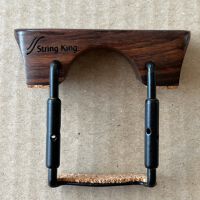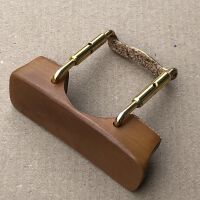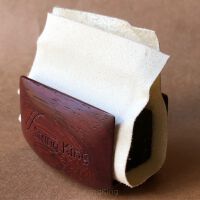Gamut - Tricolore strings
Gamut - Tricolore strings
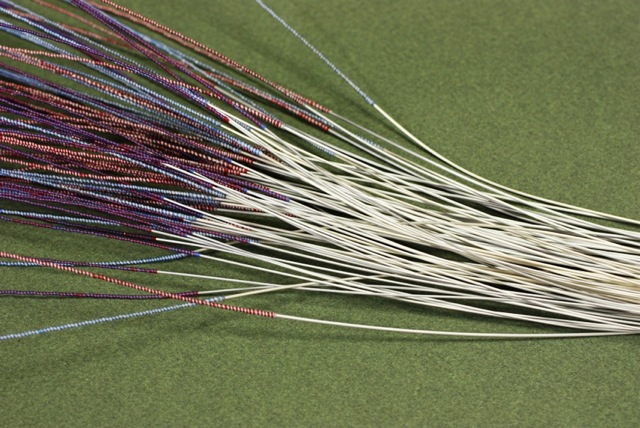 |
One of the most famous violin strings made in the 20th century was the Tricolore brand and now, after many decades of being unavailable, we are pleased to offer these strings again. This string was developed by Ray Neiner at the Perfection Musical String Co. Brunswick, IN just south of Chicago. The machines we use at Gamut Music to wind strings were purchased from Perfection and in addition to the machines we also received the formulations that Perfection used to make their strings, including the Tricolore brand. We have in our archives a copy of the Perfection workshop book that specifies the gauge of gut used for the cores, the size of the wires, length of the strings, and colors of the thread used for the stockings at the top and bottom of the strings. In addition to this practical information, we also received instruction for the special curing treatment that the gut cores went through before being wound. |
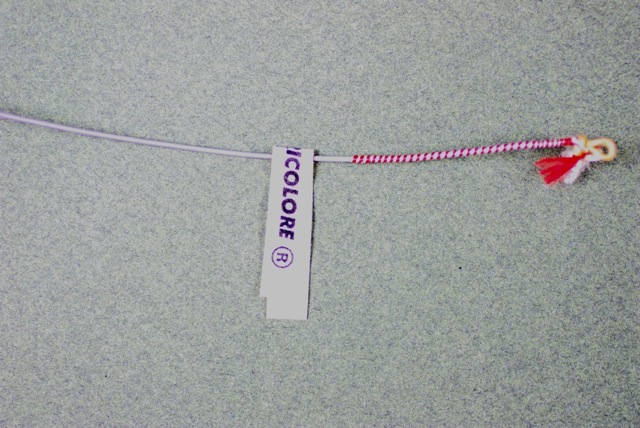 |
| An original Tricolore viola D-2 string It is our belief that we are now able to offer and exact copy of this historical brand of musical string. The perfection strings were available only for the violin and viola and therefore these are the strings we are making available. Most notably, the Tricolore string used by Jascha Heifetz and many players are interested in reproducing this tone. The string set that Heifetz used consisted of: e-1 – Goldbrokat – 0.26mm gauge a-2 – Gut 0.76mm – 0.78mm gauge D-2 - Gut 1.04mm – 1.06mm gauge G-4 – Gut/Sterling silver 0.80 mm – 0.82mm gauge We have numerous Tricolore examples in our collection of antique strings and all of the violin examples fall into these gauge ranges. I have measured at least a dozen Tricolore strings from the early to mid 20th century and have found a range of string gauges on them. When the Tricolore strings were originally made, manufacturers were not quite so strict about gauges as we are today and it was only machinists and engineers that had micrometers that could accurate gauges. Therefore, there was some variability in the diameters of strings that were marketed as "Tricolore" strings. The original Tricolore strings were not available in specific gauges, but were marketed only as "a", "d", and "G" strings with no mention or reference to gauge, diameter, or weight. The formulas for the strings in the Perfection Co. workshop notebook give a range of diameters, so there seems to have been no effort to make the strings to an exact specification. In the modern age of inexpensive micrometers and an expectation that strings will be available in a range of gauges, this traditional treatment of gauges is not satisfactory. Therefore, I have documented the gauges of strings that would have been available to Jascha Heifetz to use, for those modern players who want to try to duplicate what he would have used on his instrument, and at the same time expanded the range of gauges available for those players who require a different gauge for the best performance of their instrument. Almost all of the original Tricolore violin G-4 strings I have measured were about .80mm in diameter, although one was about .78mm, so I have included this figure in the data, but I do not think it was representative of the average string gauge, which sems to be around .80mm. The specifications in the Perfection notebook note diameters of core and wire that result in a combined diameter of .78mm - .80mm, so there seems to be a preference for the .80mm gauge. When expanding the range of strings we make I decided to make strings heavier rather than lighter, because, in my experience, modern musicians prefer the heavier gauges to lighter gauges. In addition to the plain gut strings we are also making the gut / aluminum strings as described in the Perfection workshop book. These are available for the violin a-2 and D-3 as well as the viola a-1 and D-2. The violin G-4 and viola G-3 and C-4 are made with sterling silver wire according to the Perfection specifications. One addition we have made to the original string design is the addition of a leather washer at the knot of each string. Modern tailpieces are made with wider string slots than those of the early 20th century and the gut knot is no longer big enough to hold the string in place. The leather keeps the string from pulling through the tailpiece. |
 |
| Gamut Tricolore violin G-4 Text from Gamut |

